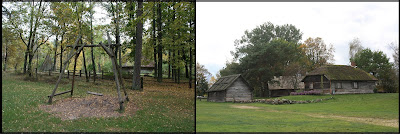 ''Welcome to REZNAS'' is what one of my friends said to me when I was walking through the corridor of my new dorm. Indeed, two days ago I moved from the other dorm (PRIMA) to this one (REZNAS) of which I already know some people living here. This is also because some of them are my classmates, as REZNAS is only for LU (Latvijas Universitāte or University of Latvia) students. In PRIMA it is
''Welcome to REZNAS'' is what one of my friends said to me when I was walking through the corridor of my new dorm. Indeed, two days ago I moved from the other dorm (PRIMA) to this one (REZNAS) of which I already know some people living here. This is also because some of them are my classmates, as REZNAS is only for LU (Latvijas Universitāte or University of Latvia) students. In PRIMA it isa mix of both local and foreign students from different institutions, people who work in the city and tourists.
As you can see on the map, REZNAS is not far away from PRIMA, maybe 100 meters max. Other then that, REZNAS is a little bit smaller than PRIMA is. It does not count 9 floors on two sides, like PRIMA, but has 5 floors in total. When being in the administration office I could still see 135 room keys (there being no single rooms as far as I know) hanging on the wall, so just like in PRIMA, a lot of people living here. I myself live now in this 18 m2 room (see picture below), together with a friend from Brazil.
As you can see from the window-view, I don't live as high anymore as I used to (now living on 1st floor instead of 7th floor). No overview to the city. Instead, now I see all inhabitants of REZNAS passing by who head to the city. This reminded me of the ''people watching'' activity which I sometimes do (and enjoy) when I am standing at my twin brother his balcony at the Grote Markt in Groningen.
Not shown on the picture, but looking a bit more to the left you will see the garbage containers from this dormitory. I found out that some people living in this neighbourhood check this (on a daily basis) as to see whether there is still something edible to be found there. Then somehow it also makes sense that I should not be surprised that when I moved my stuff I noticed a sign of Social Service being close from here. So far, each day a mini-van has come which provided food for those standing in line.
Moreover, during my move from A to B I also rediscovered how much items one can collect over just a small period of time. This will be interesting for when I have to return to The Netherlands in deciding what to keep, give-away (either to friends or charity fund) or sell. Even keeping just a small amount of stuff I bought here would already require me to buy a new bag or suitcase to carry it back home.
Up till now I am satisfied with REZNAS in that it has wi-fi (PRIMA hasn't), gas cooking (instead of electric in PRIMA), that it is cheaper (60 Ls or ~86 EUR per month - versus 90 Ls for double room in PRIMA) and seems to be better maintained. The sanitary facilities need to be shared by more people, but I do not feel that this should be an issue. The only thing I dislike is the desk-chair which is not stiff enough to provide real back-support. However, maybe a cushion will be of help to solve this issue. If not, it will act as a stimulus to improve my posture and to practice Yoga a bit more.
















































